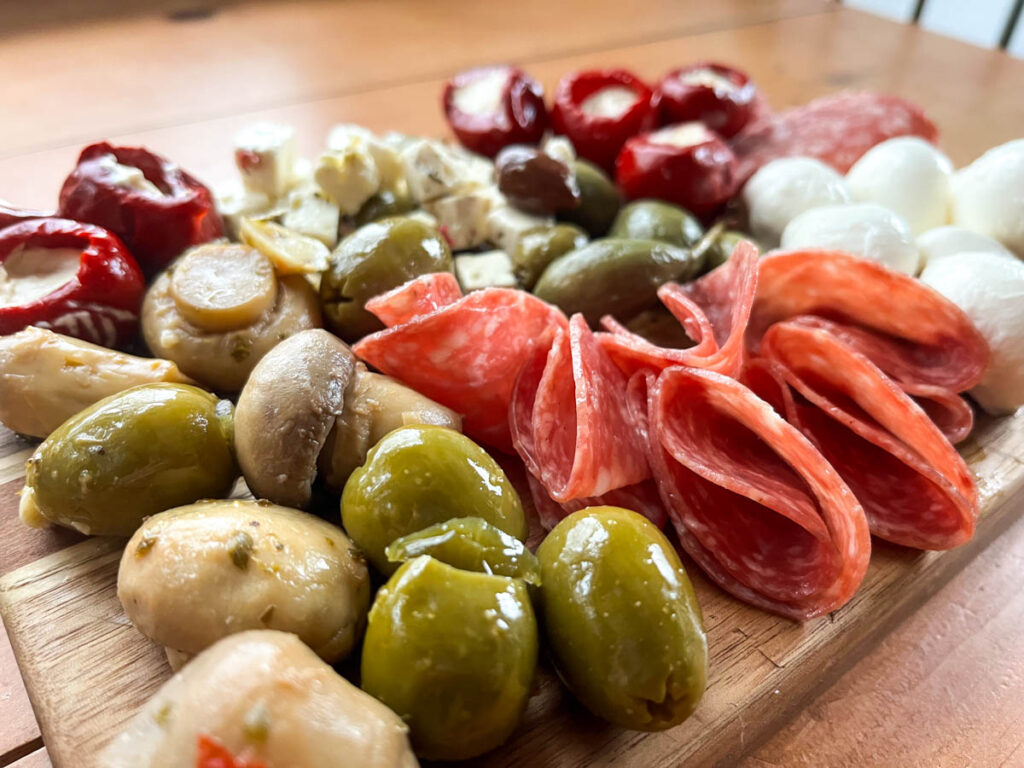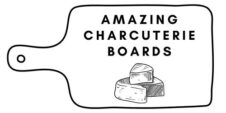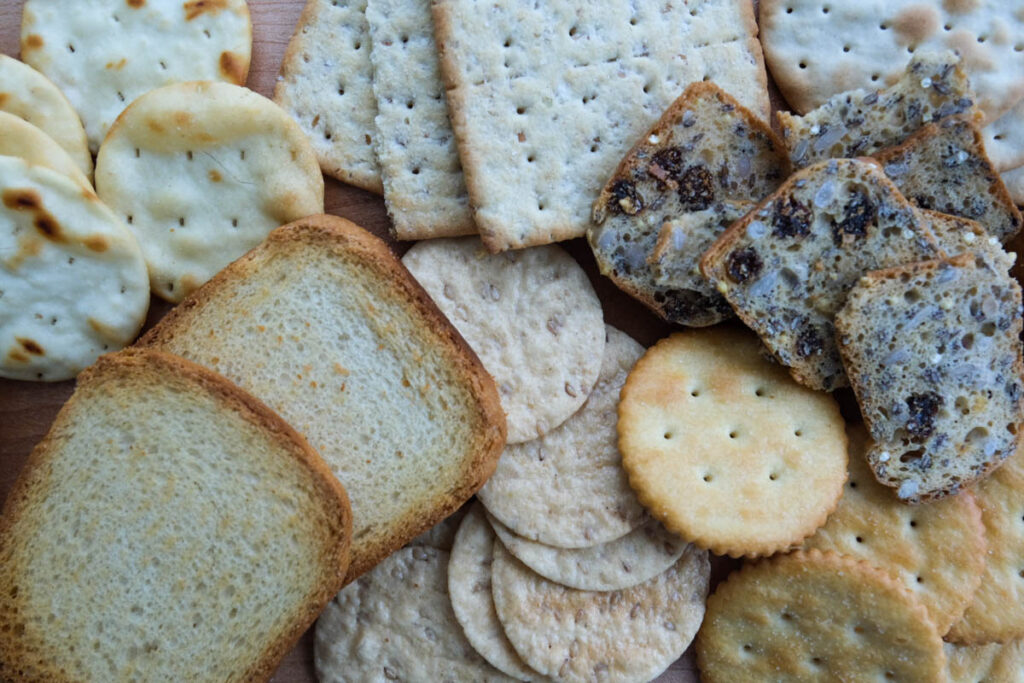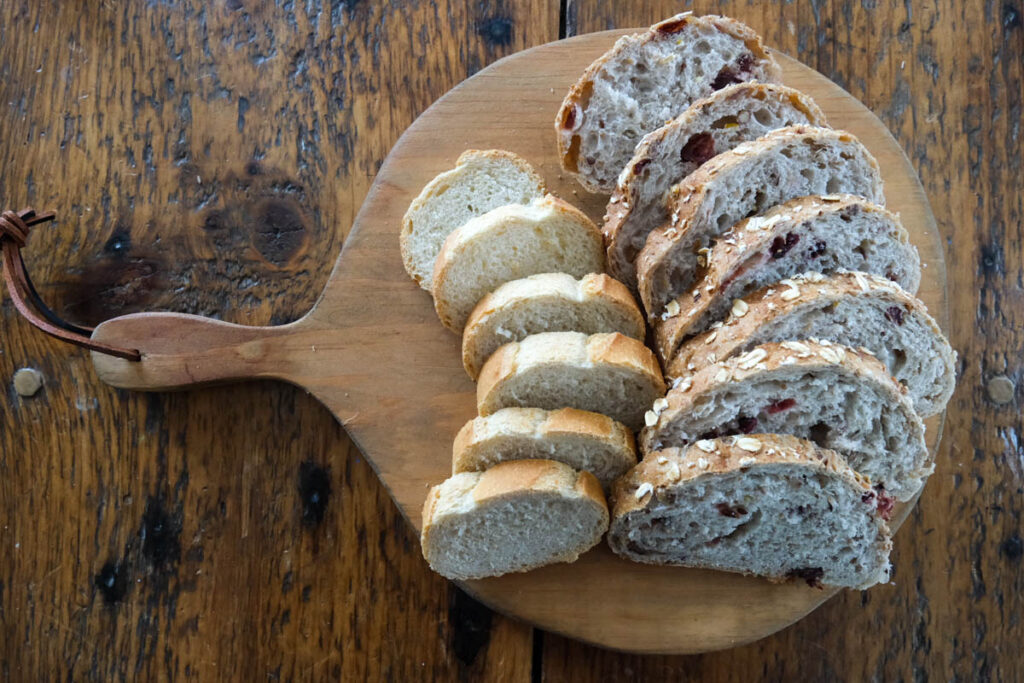Olives are a key ingredient for many charcuterie boards and they make a wonderful savory and salty addition to many boards.
Whether you are making a traditional charcuterie board or are making a more modern board (like this bloody Mary charcuterie board), knowing the best olives for charcuterie board designs will help you make the perfect board. In this article we will break down the different types of olives and make recommendations for the best charcuterie board olives.
In general our favorite olives for a charcuterie board are a mixed set. You can often purchase these in specialty shops or even the grocery store. Below you are see the top olives.
Want more charcuterie ideas? Follow me on Instagram.

Contents
Types of Olives
- Kalamata Olives: Description: These large, dark purple olives are native to Greece and are prized for their almond shape and rich, fruity flavor. Kalamata olives add a bold and distinctive taste to a charcuterie board, complementing cured meats and cheeses with their briny and slightly tangy profile.
- Castelvetrano Olives: Description: Hailing from Sicily, these bright green olives are known for their sweet, mild taste and firm, meaty texture. Castelvetrano olives are an excellent choice for a charcuterie board, offering a pop of color and a unique sweet note that pairs well with a variety of cheeses and cured meats.
- Picholine Olives: Description: Originating from France, Picholine olives are small and slender with a vibrant green hue. Their firm texture and distinct nutty flavor make them a delightful addition to a charcuterie board, providing a counterbalance to the richness of cheeses and cured meats.
- Niçoise Olives: Description: Named after the French city of Nice, Niçoise olives are small, dark purple to black olives with a slightly wrinkled appearance. These olives have a robust and savory taste, often featuring herbal notes. They are a classic choice for charcuterie boards, offering a Mediterranean touch that pairs well with a variety of cheeses.
- Cerignola Olives: Description: Hailing from Italy, Cerignola olives are among the largest olives, with a mild and slightly sweet flavor. Their meaty texture and mild taste make them versatile for pairing with a variety of cheeses, making them a great addition to any charcuterie board.
- Lucques Olives: Description: Native to the Languedoc region of France, Lucques olives are known for their distinctive crescent shape and vibrant green color. With a fruity and mild taste, these olives are a sophisticated choice for a charcuterie board, offering a nuanced flavor that pairs well with both mild and strong cheeses.
- Arbequina Olives: Description: Originating from Spain, Arbequina olives are small, brownish-black olives with a rich, fruity flavor. These olives are often pressed for their high-quality oil but can also be enjoyed on a charcuterie board, providing a burst of flavor that complements a variety of meats and cheeses.
Factors to Consider When Choosing the Best Olives for Charcuterie Board Designs
Quality: When selecting olives for charcuterie boards, prioritize high-quality olives. Look for vibrant colors, firm textures, and a glossy appearance, as these indicators signify freshness and ripeness.
Brining and Curing Methods: Exploring different brining and curing methods adds depth and variety to the olive selection. Whether water-cured or brine-cured, each method imparts distinct flavors and textures to the olives.
Pits vs. Pitted Olives: The choice between pits and pitted olives involves balancing convenience and presentation. Opting for pitted olives simplifies eating, enhancing the overall ease of consumption for guests. However, incorporating olives with pits adds a rustic touch to the presentation, appealing to those who appreciate an authentic and engaging dining experience. You will also need to decide how people will pick up their olives from the board – spoon? toothpick? etc.

Pairing Olives with Other Charcuterie Board Components
So what pairs well with olives on a charcuterie board? For one I don’t like putting my olives on a board where they can touch other items (unless those items have a similar flavor). Olives have such a strong taste that they will pass on their flavor to other ingredients on your board. I also prefer to serve olives in a bowl unless the entire board is savory with no bread or crackers as olives tend to spread liquid.
Below are some of my favorite things to pair with olives.
Meats: Olives pair seamlessly with meats on a charcuterie board, offering complementary flavors that enhance the savory notes of cured meats and creating a balance in textures that adds depth to the overall culinary experience.
Cheeses: Olives contribute to a charcuterie board by providing both contrast and harmony with various cheese varieties, considering factors such as texture and taste to create a dynamic and satisfying combination.
Accompaniments (e.g., nuts, fruits, spreads): When paired with other accompaniments like nuts, fruits, and spreads, olives enhance the overall flavor profile of the charcuterie board.

Serving Suggestions
In general, olives are best served in a small bowl on a charcuterie board or at least separated from the other food on the board. Olives are best eaten room temperature. Provide toothpicks or a spoon and plate so people can easily pick up and serve the olives on the board.
Olives can be purchased locally as markets and generally most grocery stores carry a variety of olives.
You can find ideas for other charcuterie board ingredients on our ingredients page.

Looking for more charcuterie ingredients? Check out:










